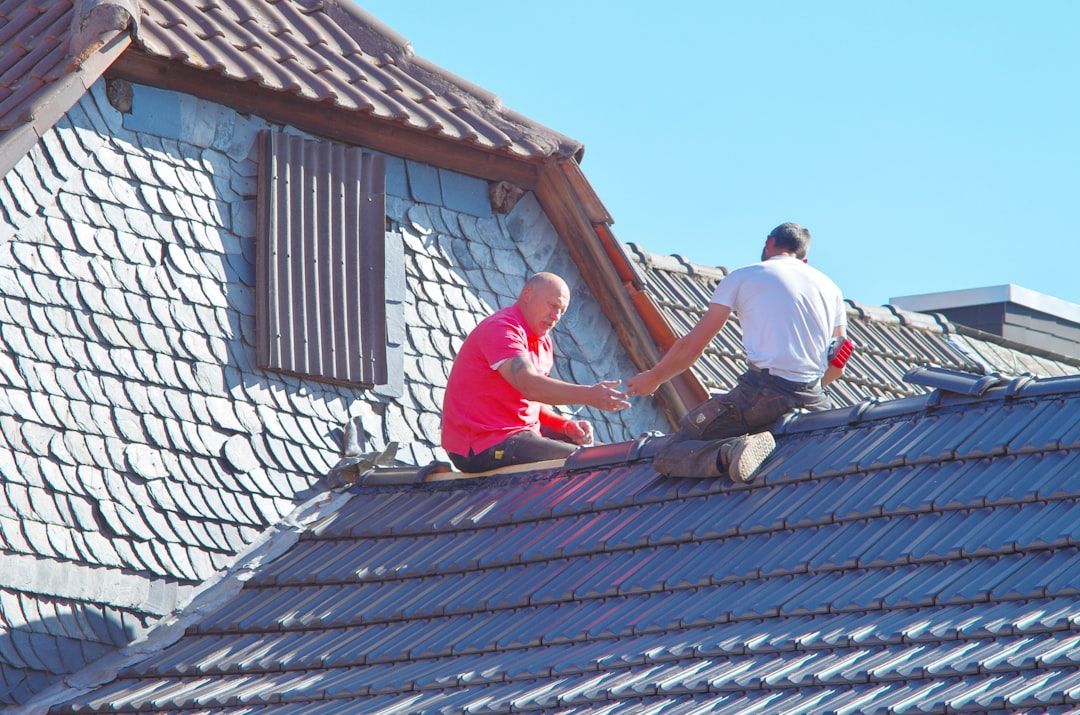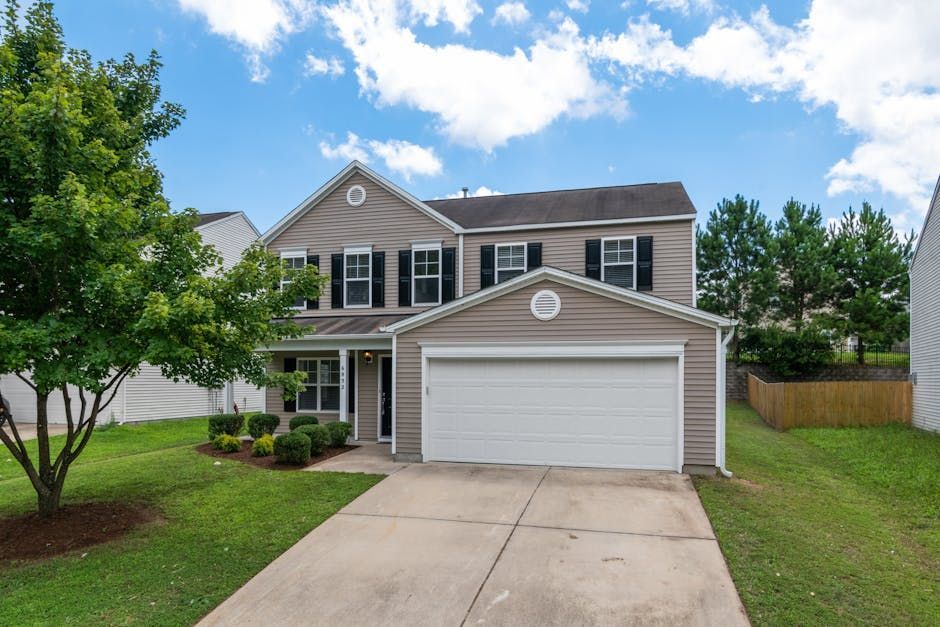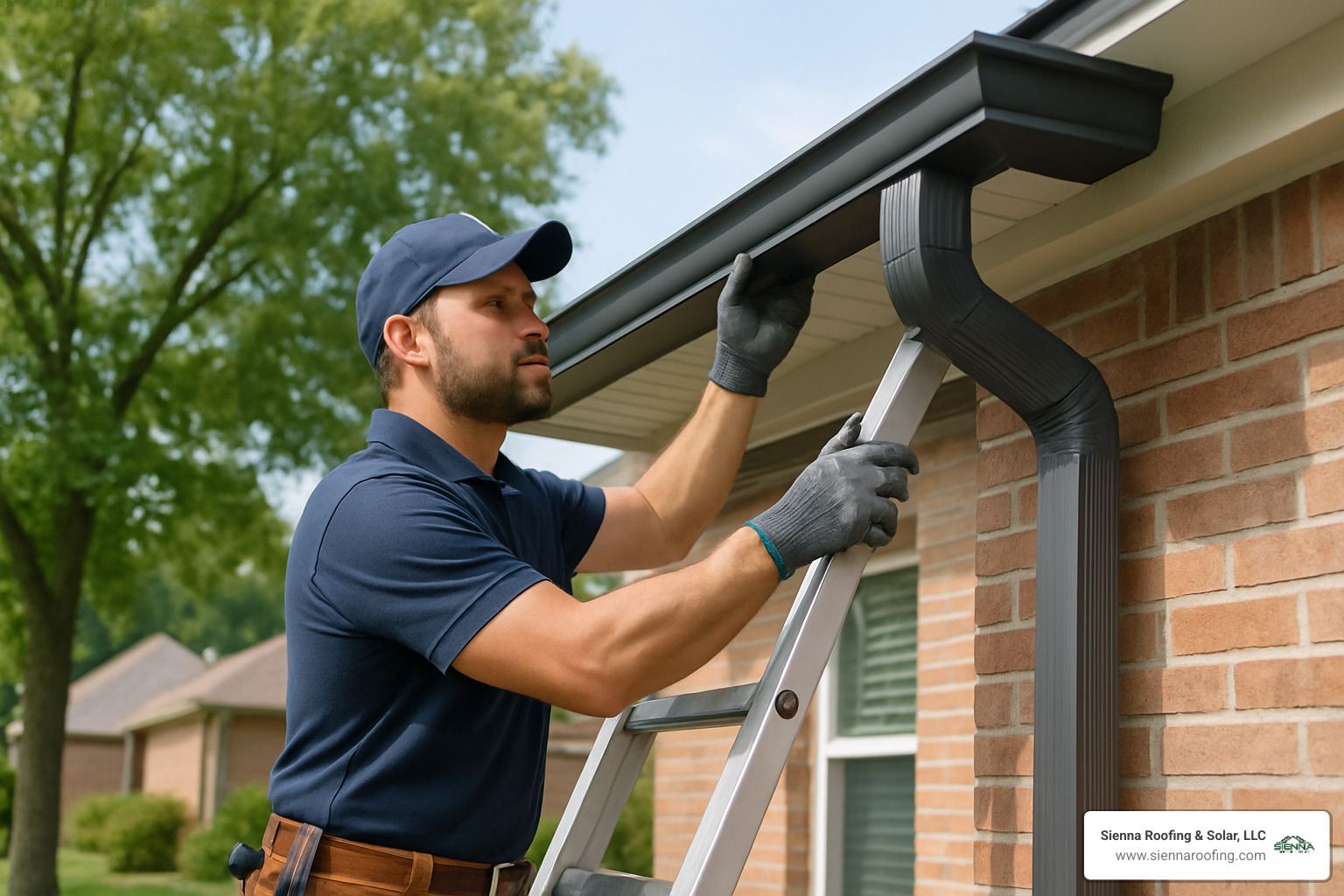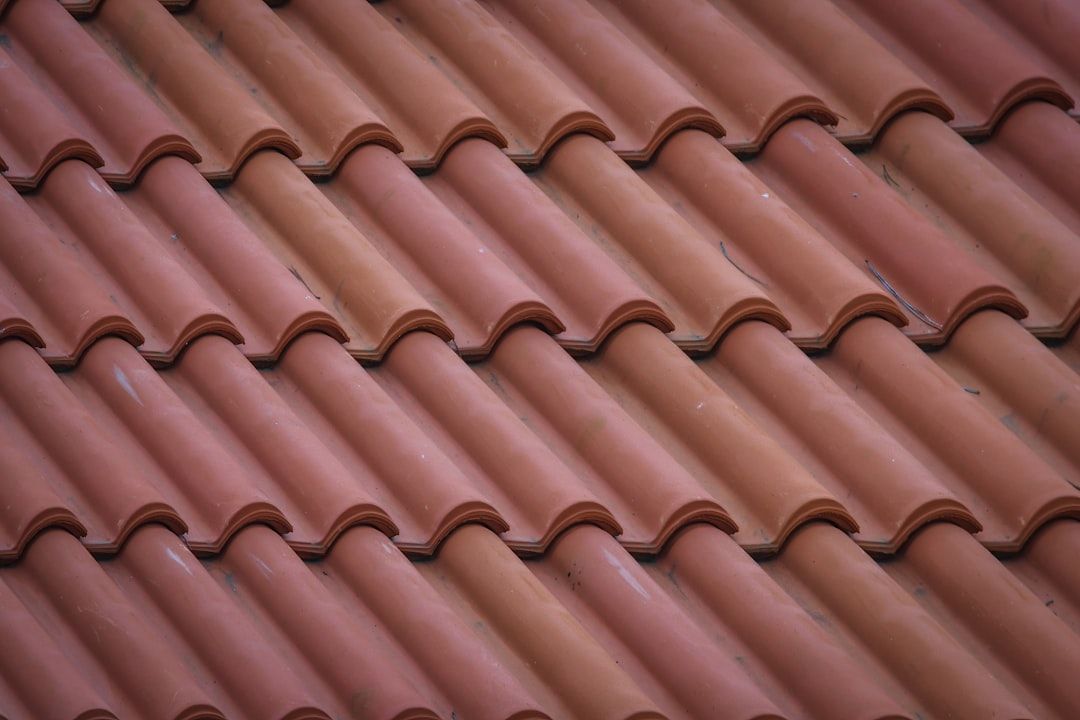Here is What Roofers aren't Telling You!

Andre Castro
Owner of Sienna Roofing
Here is what Roofers Aren't Telling You!
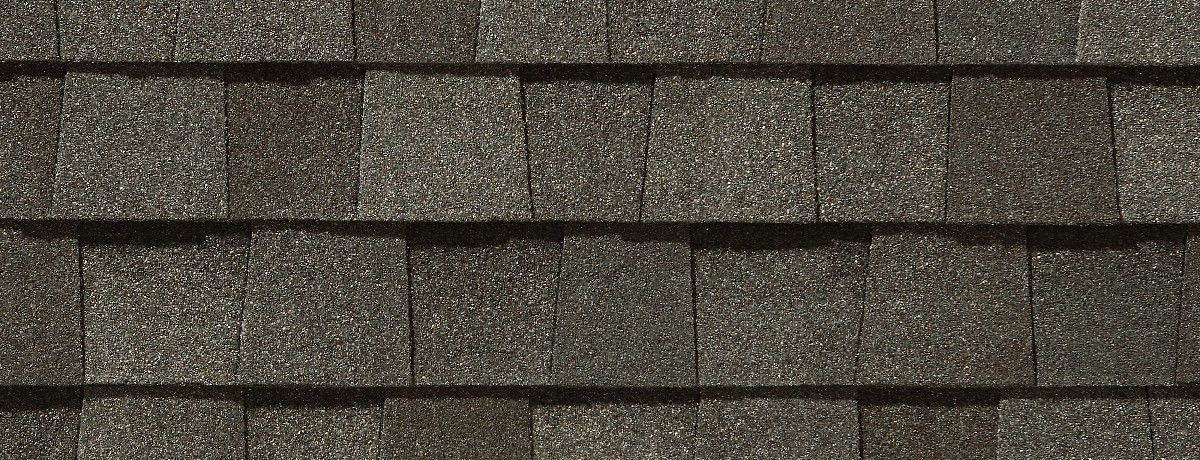
Roofers sometimes fail to tell homeowners key details that could impact their costs, warranties, or long-term satisfaction. Here are some common things less transparent roofers might not disclose:
🔧 1. Cheapest isn't best
They might push a low bid but use subpar materials or skip critical steps (like underlayment or ventilation work) to save costs and boost profits. In roofing, too good to be true usually is. What we’ve seen from competitors is a consistent pattern of cut corners, inexperience, and laziness. Many project managers and sales reps don’t even step foot on the roof — and that’s a problem.
This is a booming industry, and anyone can start a roofing company, especially in states like Texas where no license is required. That means many get into this business for the wrong reasons — chasing insurance money instead of delivering quality workmanship.
Yes, there’s money in insurance claims, but that doesn’t excuse skipping steps, underdelivering, or putting profit before people. Too many companies maximize margins by minimizing effort, and homeowners end up paying the price later with leaks, denied warranties, or early roof failure.
The smart move? Get multiple bids. Ask questions. Look past the price. Choose the roofing company that’s the best fit, not the cheapest. Quality matters — and so does experience.
📄 2. Manufacturer warranties can be voided
If the roof isn't installed to manufacturer specs, even a "30-year shingle" warranty could be void. Most homeowners aren’t told this.
1. “Lifetime” doesn’t mean what you think
Most "lifetime" warranties only cover prorated materials after 10 years — and labor is often excluded unless you pay extra for an upgraded warranty.
2. Improper installation voids the warranty. If the roof isn’t installed exactly to manufacturer specs (which many contractors skip), the warranty is void — and most homeowners never know. 3. Many warranties only cover defects, not damage. That means if your shingles curl, blister, or crack due to poor ventilation, bad flashing, or installer error, you’re out of luck — it’s not covered. 4. Most “workmanship warranties” disappear when the company does. If your roofer closes shop or rebrands under a new name (common in this industry), that 10-year labor warranty? Gone.
5. Upgraded warranties cost more — but you may not need them. Sales reps push extended warranties to boost the contract, but unless you’re getting verified premium installation (with manufacturer inspection), it's not worth much.
⏱️ 3. Roof lifespan depends heavily on attic ventilation
Without proper ventilation, even the best shingles can fail 10–15 years early due to heat buildup and moisture. If a roof in Houston, Texas isn’t ventilated properly, the consequences can be serious — especially given the region’s hot, humid climate. Here's what can happen:
1. Shingle Damage from Heat Buildup
Without ventilation, attic temperatures can reach 150–160°F in summer. This bakes the shingles from underneath, causing:
Premature aging and cracking
Curling or blistering
Voided manufacturer warranties
2. Skyrocketing Energy Bills
Poor ventilation traps heat in the attic, forcing your AC to work overtime — especially brutal in Houston’s long cooling season. Expect higher electricity bills and possible strain on HVAC systems.
3. Moisture & Mold Growth
Houston’s humidity doesn’t just stay outside — it seeps in. Without airflow:
Moisture gets trapped in the attic
Wood begins to rot or mold
Insulation becomes saturated and ineffective
4. Structural Damage Over Time
Moisture + heat can cause: Roof deck warping. Fascia and rafter deterioration. Interior leaks, ceiling stains, and even drywall damage
5. Reduced Home Value & Inspection Issues
Home inspectors can flag improper ventilation. This can scare off buyers or lower appraisal value, especially if signs of mold or structural damage are present. 6. Warranty Denial
Both shingle and HVAC system warranties can be voided if poor ventilation contributed to product failure — and they often require documentation of proper venting.
📷 4. They should give you photo documentation—many don’t
Reputable roofers provide before, during, and after photos. If they don’t offer that, you may not really know what was done. Roofers should always provide before, during, and after photos — and here’s why it’s not just helpful, but essential:
1. Proof of Work
Photos give homeowners visual evidence that:
The roof actually needed replacement (before)
The correct materials and steps were followed (during)
The job was completed properly (after)
This builds trust and transparency — especially for insurance claims.
2. Insurance Documentation
When dealing with storm damage or claims, adjusters and insurers often want proof of pre-existing conditions and detailed work progress. These photos help:
Justify scope and cost of work
Prevent disputes over what was done
Speed up claim approval
3. Quality Control
During photos show:
That crews installed underlayment, flashing, ventilation, etc.
How the job site was maintained (cleanliness, safety)
That no steps were skipped (which is common in cut-rate jobs)
This protects both the contractor and the homeowner.
4. Education & Peace of Mind
Most homeowners never go on their roof — so photos help explain:
Why certain repairs or upgrades were necessary
What improvements were made
How the roof will perform long term
It also builds confidence that the contractor knows what they’re doing.
5. Accountability
If there’s ever a dispute, leak, or callback, the photo trail provides:
A record of what was done and when
Evidence in case of warranty claims or legal issues
💸 5. Insurance payouts can be maximized
Some roofers don’t help homeowners negotiate with adjusters or explain what they're entitled to—like code upgrades, O&P (overhead & profit), or hidden damage. Contractors who specialize in insurance work often know how to maximize claims legally to ensure full coverage of the job — but some also abuse the system to inflate profits. Here's a breakdown of shady tactics:
1. Inflating Prices or Scopes
Some add unnecessary line items or inflate labor hours to boost the total payout — which may be considered insurance fraud.
2. Forging Documents
Unethical contractors might alter paperwork or damage photos to justify a full replacement when it's not needed.
3. Creating Damage
In worst-case scenarios, a few bad actors have been known to fabricate or worsen damage to trigger a claim.
4. Covering Deductibles Illegally
They advertise “free roofs” and eat the deductible — which is illegal in Texas and many other states. This can:
Void the claim
Result in fines or criminal charges
Expose the homeowner to insurance fraud liability
🚫 6. Not all roofs need replacing
Unethical contractors may push for a full replacement when a repair is all that’s needed—especially after storms. They take advantage of a homeowner's stress or confusion after severe weather, knowing insurance may foot the bill. But not every leak or missing shingle justifies a full replacement. Honest contractors assess the damage and recommend what’s truly necessary — whether it's a minor repair or full replacement — because protecting your home doesn’t mean exploiting your trust.
🧰 7. Subcontractors may be doing the actual work
The person selling you the job may not be on-site at all. Some crews are completely outsourced with little oversight. In many cases, roofing companies outsource the entire crew, and the project manager or salesperson is nowhere to be found once the contract is signed. This lack of oversight can lead to miscommunication, poor workmanship, and no accountability if something goes wrong. A reputable contractor ensures that experienced supervisors are on-site, overseeing every phase of the job — not just selling it.
🔍 8. You should check for proper insurance
Many don’t proactively show this, but uninsured work can leave you liable for damages or injuries.
1. You could be held liable for injuries
Roofing is one of the most dangerous trades. If a worker falls off your roof and the contractor doesn’t have general liability or workers' comp insurance, you could be sued or forced to pay medical bills out of pocket.
2. Property damage without coverage = no compensation
If the crew damages your home — like breaking windows, tearing gutters, or causing leaks — and the contractor lacks general liability insurance, you’re stuck covering the costs.
3. Many uninsured contractors fake or borrow coverage
Some shady contractors use expired policies, fake certificates, or list insurance under a different business name than the one on your contract. Always call the provider to verify coverage is:
Active
Under the correct business name
Covers both liability & workers’ comp
4. Homeowners insurance won’t cover contractor mistakes
If the roofer causes damage due to negligence or bad work, your homeowners policy won’t bail you out — especially if you knowingly hired someone uninsured.
5. It’s a basic sign of professionalism
Licensed and insured contractors are more likely to run legitimate businesses and stand behind their work. If they’re cutting corners on insurance, imagine what else they’re skipping.
🧼 9. Clean-up is often overlooked
Some companies leave nails, trash, or damage landscaping. Ask about their post-job cleanup process—not all take it seriously. Job site clean-up in roofing is more important than most homeowners realize — and it’s often the part shady contractor's neglect. Here's why it matters:
1. Leftover nails and debris are dangerous
Roofing nails, torn shingles, and old underlayment can be hazardous to your family, pets, and vehicles. A proper clean-up includes:
Magnet sweeping the yard and driveway
Removing all debris from bushes, gutters, and flower beds
Disposing of old roofing material (not dumping it on your curb)
2. It protects your landscaping and property
Sloppy crews can destroy plants, dent gutters, or leave trash on the lawn. A good roofer uses:
Plywood shields for AC units
Tarping and catch systems to protect landscaping and siding
Proper trash containment throughout the job
3. It reflects the contractor’s professionalism
If a roofing crew leaves a mess behind, it's a red flag. Clean-up shows respect for your property and attention to detail — the same attention your roof should receive.
4. It's part of the final inspection
Clean-up is the last chance to:
Double-check the workmanship
Identify missed repairs
Ensure there’s nothing left behind that could cause issues later
5. Poor clean-up creates bad reviews
Even if the roof looks good, homeowners remember the experience, not just the product. Leftover messes lead to:
Negative word of mouth
Lost referrals
Warranty disputes if damage occurs from debris
🏚️ 10. Rotten decking or hidden issues = surprise charges
If it's not discussed upfront, “discovery” fees for rotted wood or structural issues can blindside you mid-project. Overlooking rotten roofing decking is one of the most dangerous shortcuts in roofing, and the consequences can be costly and hazardous. Here are the key results of ignoring it:
1. Shingles Won’t Properly Fasten
Rotten or soft decking won’t hold nails securely, meaning:
Shingles can lift, shift, or blow off in storms
Water can seep under loose areas, leading to premature leaks
Your new roof's lifespan is drastically reduced
2. Increased Risk of Leaks
Rotten wood is usually the result of previous water intrusion. If it’s not replaced:
Moisture continues to spread
Leaks can reappear soon after the new roof is installed
Attic insulation and ceilings may be damaged
3. Structural Integrity is Compromised
Rotten decking weakens the structural base of your roof. Over time, this can lead to:
Sagging or spongy roof sections
Safety hazards for people walking on the roof
Costly framing repairs if rot spreads to trusses or rafters
4. Voided Warranties
Most manufacturers void warranties if shingles were installed over:
Rotten wood
Soft decking
Any substrate not meeting their nailing requirements
5. Hidden Costs Later
If the decking wasn’t replaced when it should’ve been, you may have to:
Tear off and reinstall the roof again
Pay for mold remediation or drywall replacement inside the home
Fix framing damage that could’ve been avoided
6. Insurance Issues
If the deck wasn’t addressed during an insurance claim:
Your policy may not cover future damage
The insurer may deny repairs due to negligent installation practices



